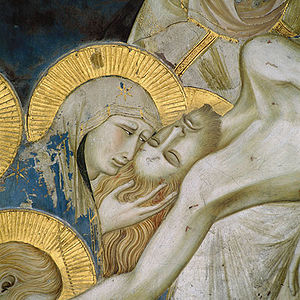WelCom May 2017:
This year marks the 500th anniversary of the Protestant Reformation. In his series on Mary and the Reformation Kieran Fenn fms explores some of the key reformers of the sixteenth century. This third article of the series is the second part about Ulrich Zwingli.
For Zwingli, father of the Reformation in Switzerland, Mary’s exemption from sin was a major reason to sing her praises; ‘since the beginning of the world’ she alone of all women conceived her Son without transmitting to him ‘the human weakness that we all bring with us from Adam’. Zwingli uses the term ‘immaculate’ of Mary though he does not relate her virginal conception of Jesus to her own immaculate conception. In his writings he states that she was without ‘the smallest trace of a stain’. The only Marian doctrine not reflected in his preaching is the Dormition or Assumption of Mary.
Mary’s Heart
Zwingli was keen to promote the right kind of Marian piety. Anticipating the Mariology of the Counter Reformation he turned to Luke, pointing out when Jesus was a child Mary was ‘pondering all these things in her heart’, a reference to the Finding in the Temple. This led the Swiss reformer to focus on the heart of Mary who admired the ways of God who did not choose ‘the emperor’s daughter or King Herod’s daughter, but me, a small, simple virgin.’ She admired the mystery that ‘I, a bride of God the heavenly Father, and a palace or chamber of the Holy Spirit, have born him in this world for the salvation of all humans without a bodily father, him who in his divinity is born from all eternity from the heavenly Father without a mother’. All of this took place as Mary reflected, ‘not according to my merit but according to God’s grace’.
‘Who then has ever known God better than the Virgin Mary?’ ‘Who would despair of God, seeing the valiant heart of the immaculate Mary follow her Son after all men abandoned him, even to the cross?’ ‘All the things that Christ experienced in his childhood she pondered over in so loyal a heart.’ Zwingli asked these questions and went on to see them as being a sure sign of ‘how closely her heart was grounded in God’. Mary’s was a heart that carried ‘the care and love of a mother, for in her virginal heart she felt all the sufferings of her Son’.
Mary’s Example
We have much to learn from Mary and her faith for she referred all things, not to herself but to God and Jesus. ‘Her greatest honour is her Son’ and by the same token, ‘her greatest honour is that one likewise learns to love him above all things and is ever thankful for the benefit that he has brought us’. A true following and imitation of Mary leading to a holy life in Christian discipleship requires a balance: ‘The more the honour and love of Christ Jesus has increased among humans, the more has the honour and appreciation of Mary increased, since she has born for us a great and precious Lord and Redeemer. But if you wish especially to honour Mary, follow her purity, her innocence, and her strong faith.’
Zwingli did part with some trends of Marian devotion in Catholicism. In the face of exalting her and recognising her as graced and honoured by God, ‘she has not become less poor herself, and she has had to bear persecution, pain, and misery in which, however, she has remained with a strong heart. And therefore may you, with your poverty and your weariness, find an example in her. This misery that is so well known to humans must be born, since the holy Mother of God was not sheltered from it.’
In summary, Zwingli’s approach to Mary was essentially pastoral. He wanted all forms of devotion to respect ‘the true religion’; that is, the only mediation of Christ for the sins of the world and the primacy of faith in the life of Christians. Therefore, no petition should be addressed to any saint and not even to the Mother of God. But there should be a contemplation of Christ’s relation to Mary, admiration of the divine gifts that she received, participation in the meditations of her heart, and imitation of her examples.
This high Mariology of praise was preserved under Zwingli’s successor, Heinrich Bullinger (1504‒1575) who also preached notable sermons in praise of the Virgin. He taught both that Mary was properly called Mother of God and the perpetual virginity of Mary, as well as that she was taken to heaven body and soul on the biblical model of Elijah who was carried up to heaven in a chariot of fire: ‘We believe that the Virgin Mary, Begetter of God, the most pure bed and temple of the Holy Spirit, that is, her most holy body, was carried to heaven by angels.’
Source: Tavard, George H (1996). The Thousand Faces of Mary. Michael Glazier: Collegeville.
